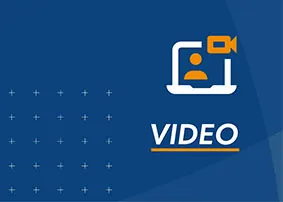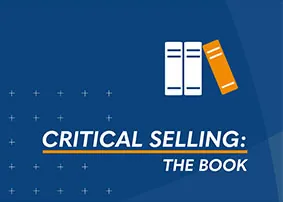Best Practices for Virtual Selling

With all the changes in society, many salespeople must switch their focus from the face-to-face interaction that so often characterizes a sales transaction to selling their products and services in a virtual environment. For many reasons, this can be jarring. Much of a salesperson’s personal tool kit, the tried and true methods they employ when dealing with customers, do not readily translate into the virtual world. In order to meet their quotas, sales professionals need to either find new tools or customize and adapt their ways to better suit this vastly different landscape.
One of the first things lost in a shift to virtual selling is the physical element of face-to-face communication. Much of how we communicate centers around the cues we send and receive through our body language. In the virtual world, with the increased use of phones, email, and video conferencing apps like Zoom, it becomes more difficult to read these signs. Whether it’s the tone of an email or the look of video conference–where participants can appear frozen behind a desk–you may notice that your well-trained eye for reading customers is suddenly impaired. Following are tips that could help you transition from face-to-face into virtual selling.
1. Choose the Best Video Conferencing Tool
Telecommunications has become one of the top industries of growth over the past several years. It should come as no surprise that companies are making huge investments in creating and improving their systems to meet the surge in demand for video conferencing tools.
Microsoft Teams, Google Meet, and Zoom are some of the game’s top players, but these are likely to face increased competition soon. To choose the best video conferencing tool for your team’s virtual sales meetings, you need to consider:
- How easy is it to use?
- Does it require downloading a program or any special requirements beyond an internet connection?
- How reliable is the infrastructure?
- Does it sync up with other systems currently in place?
Once you’ve performed your due diligence and chosen a platform, ensure every person in your organization uses the same tool and has command of its various features. Screen sharing, hosting capabilities, and chat functions are a few that are useful during demos and presentations. Prioritize what your team needs most to perform at its best.
2. Create a Virtual Selling Space
With the increased use of cameras, think about how you come across visually. Remember that your posture, such as how you sit, can affect your voice. A slumped position makes it harder for others to hear you. Sitting up straight allows your diaphragm to expand and contract, making for a clearer and more confident tone of voice. Work in a little hand movement to emphasizes key points, as this increases interactivity. Also, consider the position of your computer or cell phone. The angle may not be flattering. Nobody wants to talk to a giant head or see inside your ear canal. Set an angle that shows your shoulders and allows you to look straight ahead when speaking. In addition, note the space behind you or select a virtual background, such as your cityscape or company logo.
3. Follow an Established Sales Process
Before you can innovate or improve a process, a team must be aligned and find a common ground. This is critical for any sales organization and managing sales teams remotely. A typical sales process includes prospecting, qualifying, presenting, and closing the deal. It also involves account management and client retention. Establish which type of communication is best for each stage of the sales cycle and what changes you need to adapt to virtual selling.
For example, suppose demos are the main component of your sales process. In that case, in-person events or meetings aren’t currently doable, which means you’ll need to translate that information into online demos. Set an agenda that offers enough time to adequately showcase the product or service, answer client questions, and map out the next steps in one video call.
Also, test equipment ahead of time to ensure a smooth delivery. Few things ruin the momentum of a presentation faster than a faulty connection or pixelated screen. Establishing your virtual sales process serves as a foundation to then improve upon and personalize based on feedback.
4. Engage Your Audience Virtually
Learning how to sell virtually requires making the most of your time by engaging your audience in the sales conversation. This is achieved through visual aids, clear messaging, and interactive discussions. You’ll want to schedule enough time to share the information necessary to make a decision but not so long that your audience loses interest.
For a more extended meeting or event, schedule regular breaks and prompts to keep people engaged with the process and ask questions about the material. Keep in mind, when presenting to more than one decision-maker at a time, the Q&A portion of the conversation is invaluable as each person will retain the information differently and have specific questions pertaining to how they can apply it to their own team.
5. Keep Your Sales Presentation Highly Educational for Prospects
During the prospecting phase, you want to show how your product or service solves a problem. Whether you’re prospecting by email, through LinkedIn, or another method, keep the information straightforward and educational. Discuss:
- What your product/service does
- Who it’s meant to help
- Why it’s a unique or a favorable resolution to similar products/services
- How it’s going to improve a person’s life
Hone in on data points like case studies, ROI percentages, and other metrics that present what you’re selling in a positive light and illustrate credibility and trust you’ve already built with other clients.
6. Use Storytelling in Your Sales Approach
Another tactic when selling virtual is using storytelling to share information on a personable level. While you want to be educational with supporting data to tell the story, it’s important to provide context. Data on its own is less impressive than when you attach it to a scenario that makes it feel personalized and makes the experience more memorable.
One of the key factors of being a successful salesperson is creating an authentic connection. Prior to presenting, perform audience research that’ll speak directly to their needs and goals. Even with the most impressive numbers, if they don’t make a connection to how what you’re selling can specifically solve their problem(s), it doesn’t work.
7. Be an Active Listener
Being an active listener means generating interaction while remaining aware of the other people in the virtual room. Learning how to sell virtually includes watching for nonverbal language cues that can be easily interpreted in person. After presenting a section of information, pause, and give your audience a chance to respond.
In virtual selling, you’re going to spend more time on the phone or in video conference. As such, your active listening skills become more important. Your sense of vocal indicators—the tone, sighs, use of “um,” and voice inflection—must become heightened to better gauge what a customer is thinking. Sighs can express exasperation, with either a company problem or their processes. This can clue you in to possible obstacles. A lot of “ums” and pauses can mean your client is unsure and looking for guidance. Note these as areas you might need to further explain or ask more questions.
If you see someone is distracted or may seem confused about a certain point, slow down and make sure they’re retaining the information being presented. It’s less about getting through as much information at once and more about making sure that it’s making the desired impact. Additionally, when fielding questions, repeat back part of the question, avoid general or vague answers or advice, and provide clear examples to emphasize your point.
8. Use Written Communication and Send Follow-Ups
Follow-ups ensure everyone is one the same page. After a conference call or video chat, send a brief summary of the meeting, and highlight the next steps. In addition to thanking them for their time, offer an added value, such as a link to an online resource that was referenced or marketing materials that may guide them toward a favorable outcome. This gives you both a record of what expectations look like going forward to eliminate miscommunication and keep the process moving forward.
In virtual selling, you will need to rely more on the written word, but without verbal indicators, it can be easy to misunderstand a client’s intent. Your clients may not be skilled writers, able to clearly state their aims and objectives. Often, people write in shorthand and merely state the facts; it can be difficult to get the info you need. If something is unclear, ask more questions. At the same time, salespeople should ensure their own emails are concise and on point. Proofread and even read your emails aloud before you hit send. Remember, recipients don’t just read an email; they also hear it as if it’s spoken. Make sure your word choice and tone are appropriate for the specific client.
9. Be Flexible and Willing to Adjust to Client’s Preferences
Meet clients where they are as much as possible. This means you may have to adapt your communication style to what clients prefer. Some appreciate email for follow-ups and information sharing, while others favor a weekly check-in call instead of being bogged down by their inbox.
Another thing to keep in mind with everyone working from home is that people are juggling responsibilities in ways that may change at a moment’s notice. Make it easy for prospects and clients to schedule, cancel, or reschedule appointments with you through an online calendar. This can streamline the process on both ends instead of playing phone tag or waiting for email replies to have a meeting.
Selling virtually, you need to adjust to the customer’s communication preferences. Some of your clients may be more comfortable on the phone while others prefer to talk over video. While something as simple as nodding along during a video chat can signal your clients that you hear them, you’ll need to verbally confirm your comprehension of the issue at hand when you speak to them over the phone. Remember, regardless how your client prefers to communicate, the goal is the same: to bring value to their specific needs.
10. Track Metrics to Understand the Impact of Virtual Selling
Typically, the amount of time spent in virtual communication is less than the time granted in person. As such, you need to ask better questions. At the same time, it’s important to seize control of the conversation. While you should always encourage your customers to speak, you need to direct the discussion with specific questions. Letting your customer control the dialogue can make you appear ineffective or unsure. Worse, it can inhibit you from your goal. Remember, it’s your job to steer the conversation in the most productive way for you to gain the information needed to provide solutions.
It’s important to gauge your performance by tracking metrics. Set individual and team data points to ensure you’re progressing toward your goals, identifying areas for improvement, and preparing for future growth and market changes. A few KPIs you can add to your regular reports are:
- Lead response time
- Closing rate
- Average revenue of closed deals
- Number of new prospects, qualified prospects, and set appointments
Establish set figures and timelines to gauge progress and make changes along the way. Using metrics to guide your selling style will also help you recognize slow seasons in the industry, changes in consumer behavior, and other information that can shape your selling efforts from quarter to quarter. For example, if Q4 is notoriously a slower selling season, what actions will you put into place to frontload efforts at the beginning of the year?
The Importance of Building Strategy to Support an Effective Virtual Selling Environment
Those who embrace the technology and new methods of communication may find that selling virtually makes their jobs easier. It’s one thing to laugh along with a client on the phone, but it’s a whole new level of interaction when you catch that “Aha” moment in their eyes when they see for themselves that you have the knowledge, experience, and expertise to help their organization. At this point, you’re a step closer to establishing a long-term relationship–whether you’re sitting five feet across a conference table or watching on your computer from hundreds of miles away.
Updated 06/03/2025
- 1. Choose the Best Video Conferencing Tool
- 2. Create a Virtual Selling Space
- 3. Follow an Established Sales Process
- 4. Engage Your Audience Virtually
- 5. Keep Your Sales Presentation Highly Educational for Prospects
- 6. Use Storytelling in Your Sales Approach
- 7. Be an Active Listener
- 8. Use Written Communication and Send Follow-Ups
- 9. Be Flexible and Willing to Adjust to Client’s Preferences
- 10. Track Metrics to Understand the Impact of Virtual Selling
- The Importance of Building Strategy to Support an Effective Virtual Selling Environment

- Account Planning (11)
- Awards (50)
- Client Testimonial (37)
- Personal Branding (19)
- Podcast (11)
- Research (68)
- Sales Career Development (85)
- Sales Coaching (154)
- Sales Consulting (133)
- Sales Culture (164)
- Sales Enablement (341)
- Sales Leadership (108)
- Sales Management (240)
- Sales Negotiation (16)
- Sales Prospecting (119)
- Sales Role-Playing (18)
- Sales Training (231)
- Selling Strategies (254)
- Soft Skills (67)
- Talent Management (92)
- Trusted Advisor (27)
- Virtual Selling (41)
- Webinar (10)





























